This is a
closeup of the darker sign at right in the photo immediately above.
The address appears on this sign. |
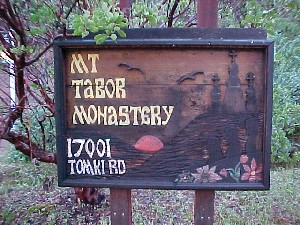
|
| Main Gate up the monastery road. |
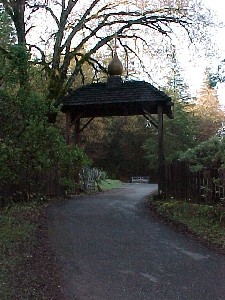 |
| Entry area immediately inside the
entry gate. Note the gate at left. This is a roadway directly
up to the cloistered area and is closed to the public. There is a
shrine in the middle of this photo, and the road to the right is the
access for the public. |
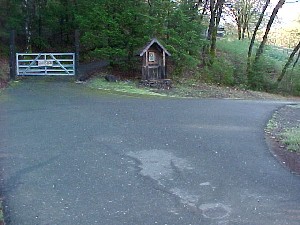 |
| The entry area shrine to the Holy
Transfiguration. |
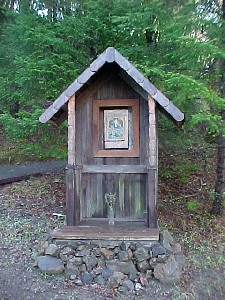 |
| Closeup of the icon in this shrime |
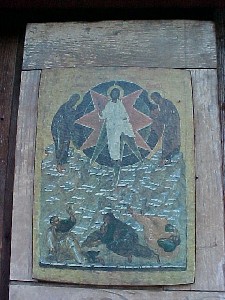 |
| Going up the public access roadway to
the Monastery, the humor of the Monks immediately becomes apparent.
Here is a "No Devils Allowed" sign! |
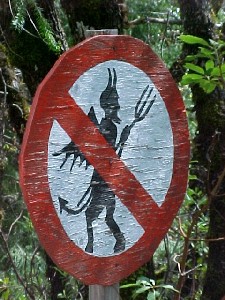 |
| There are walking paths on which the
Monks can exercise, pray and meditate. When they cross the main
road, you will see this sign - "Caution! Monks Crossing"! |
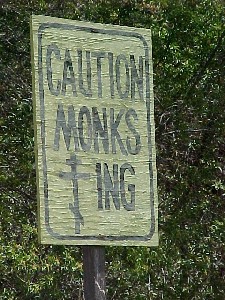 |
| Here is the parking lot by the main
entry Gate into the Monastery (left) and the Monastery Church (right)
consecrated to St. Nicholas as patron. |
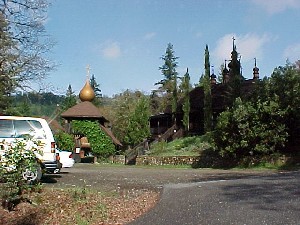 |
| Here is a more detailed photograph of
the Monastery Church. |
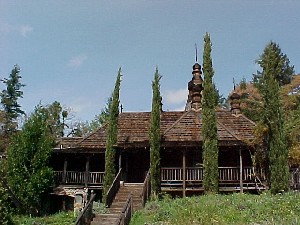 |
| Here is a view from the Church down
Redwood Valley. |
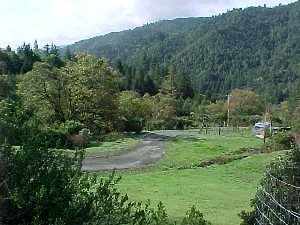 |
| Here is another view from the parking
lot area of the monastery's pond. |
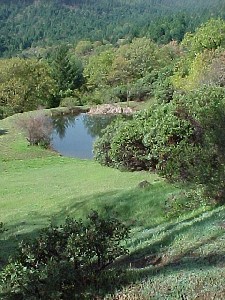 |
| Here is a photograph of the main entry
Gate into the Monastery complex. The bay window at left is a
visitation room and also contains literature on the Catholic Byzantine
Rite and the Eastern Churches in General. |
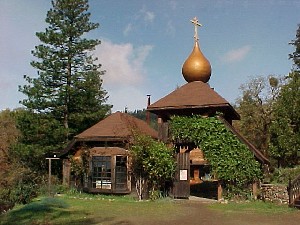 |
| Note the Attire Advisory sign attached
to the entry Gate. A bit of humor, but with a distinctly appropriate
point. |
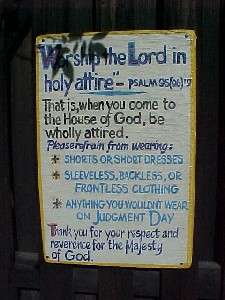 |
| Just inside the main gate, one sees
both the Refectory building (right) and the Residency building (in
background, at left). |
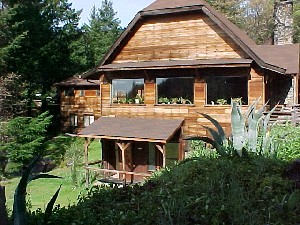 |
| The interior of the Refectory. |
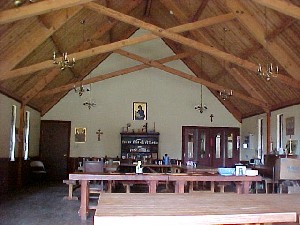 |
| An interior photograph of the
Church, showing the base of the cupola at top. In the background you
see the icon screen. The sanctuary lies behind the icon screen
"Iconostasis" in the background. The red curtain in the
center conceals the sanctuary itself. During the Liturgy, the the
monks assemble in the forward part of the church, behind the beams in the
foreground. The laity assembles on this side of the beams for the
Liturgy. |
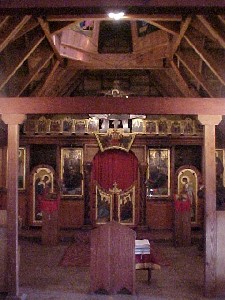 |
| A wider view of the Monastery
Church interior. The icon stand to kiss (there is no holy
water font) is in the foreground with candle stands. Upon entry, the
individual bows profoundly, and kisses both the icon on this table and the
crucifix laying to the icon's right. |
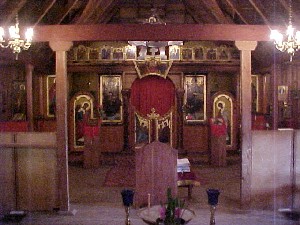 |
| The icon of the patron of the
church, St. Nicholas, is at the fore-left of the church hanging on the
"icon screen" with a votive lamp hanging in front. |
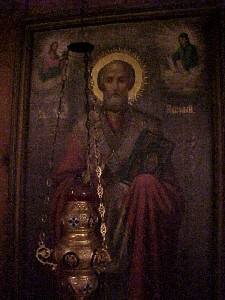 |
| Another icon of St. Nicholas,
immediately in front of the one appearing above, situated on a table. |
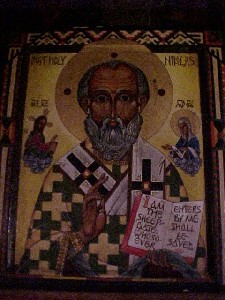 |
| There are several stained glass
windows in the church. While many reflect modern craftsmanship and
are probably made by local artisans, there are several which are obviously
of an earlier era and made in northern Europe. This one for example
has the inscription at its base "Dom des Dames" at its bottom
and is probably from a Premonstratensian house in France or
Belgium. |
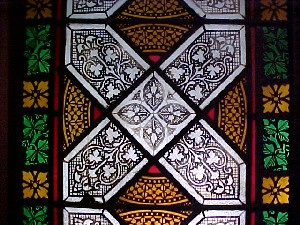 |
| Going up the hill even further, one
encounters the Retreat Houses of the Monastery. |
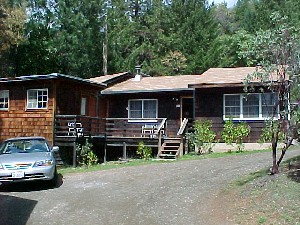 |
| Retreat House Lounge. |
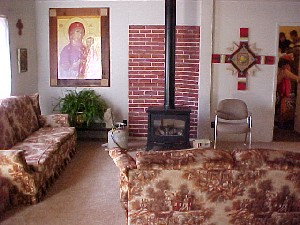 |
| Retreat House Visitation / Reading
/ Chapel room. |
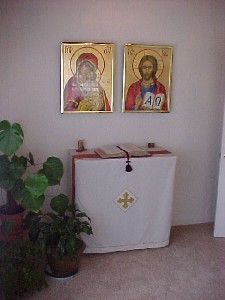 |
| Hallway in the residency portion of
a Retreat House. |
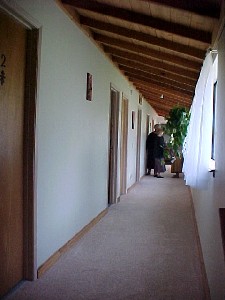 |
| Typical retreatant's
room. |
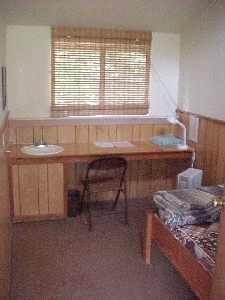 |